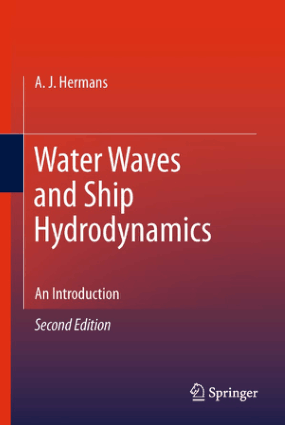Contents
Acknowledgements ix
Preface xi
Introduction xiii
Part 1 Linking Ship Stability and Ship Motions
1 Forces and moments 3
2 Centroids and the centre of gravity 11
3 Density and specific gravity 21
4 Laws of flotation 24
5 Group weights, water draft, air draft and density 34
6 Transverse statical stability 44
7 Effect of free surface of liquids on stability 51
8 TPC and displacement curves 56
9 Form coefficients 62
10 Simpson’s Rules for areas and centroids 69
11 Second moments of area – moments of inertia 94
12 Calculating KB, BM and metacentric diagrams 103
13 Final KG plus twenty reasons for a rise in G 118
14 Angle of list 124
15 Moments of statical stability 134
16 Trim or longitudinal stability 143
17 Stability and hydrostatic curves 172
18 Increase in draft due to list 189
19 Water pressure 194
20 Combined list and trim 198
21 Calculating the effect of free surface of liquids (FSE) 202
22 Bilging and permeability 213
23 Dynamical stability 227
24 Effect of beam and freeboard on stability 233
25 Effects of side winds on stability 236
26 Icing allowances plus effects on trim and stability 239
27 Type A, Type B and Type (B-60) vessels plus FL and PL curves
(as governed by DfT regulations) 243
28 Load lines and freeboard marks 248
29 Timber ship freeboard marks 261
30 IMO Grain Rules for the safe carriage of grain in bulk 266
31 Angle of loll 276
32 True mean draft 281
33 The inclining experiment plus fluctuations in a ship’s
lightweight 286
34 The calibration book plus soundings and ullages 293
35 Drydocking and grounding 301
36 Liquid pressure and thrust plus centres of pressure 312
37 Ship squat in open water and in confined channels 324
38 Interaction, including two case studies 337
39 Heel due to turning 353
40 Rolling, pitching and heaving motions 356
41 Synchronous rolling and parametric rolling of ships 366
42 List due to bilging side compartments 369
43 Effect of change of density on draft and trim 375
44 List with zero metacentric height 379
45 The deadweight scale 382
46 The Trim and Stability book 385
47 Simplified stability information 388
48 The stability pro-forma 394
Nomenclature of ship terms 403
Photographs of merchant ships 409
Ships of this millennium 412
Part 2 Linking Ship Stability and Ship Strength
49 Bending of beams 417
50 Bending of ships 431
51 Strength curves for ships 437
52 Bending and shear stresses 447
Part 3 Endnotes
53 Draft Surveys 467
54 Quality control plus the work of ship surveyors 470
55 Extracts from the 1998 Merchant Shipping (Load Line) Regulations
Reference Number MSN 1752 (M) 473
56 Keeping up to date 480
vi Contents
Part 4 Appendices
I Summary of stability formulae 485
II SQA/MCA 2004 syllabuses for masters and mates 497
III Specimen exam questions with marking scheme 505
IV 100 Revision one-liners 516
V How to pass exams in maritime studies 520
References 522
Answers to exercises 524
Index 531
Contents vii
Preface
This book was written specifically to meet the needs of students studying
for their Transport Certificates of Competency for Deck Officers and
Engineering Officers, and STCW equivalent international qualifications.
Several specimen examination questions, together with a marking scheme,
have been kindly supplied by SQA/MCA.
The book will also prove to be extremely useful to Maritime Studies
degree students and serve as a quick and handy reference for Shipboard
Officers, Naval Architects, Ship Designers, Ship Classification Surveyors,
Marine Consultants, Marine Instrument Manufactures, Drydock
Personnel, Ship-owner Superintendents and Cargo-Handling Managers.
Stability can exist when a vessel is rolling or trimming – it is the ability to
remain in stable equilibrium or otherwise. Hence there is a link between
Ship Stability and Ship Motion. Stability can also exist in ship structures via
the strength of the material from which they are built. A material may be
stressed or strained and not return to its initial form, thereby losing its stability.
Hence there is a link between Ship Stability and Ship Strength.
Another type of Ship Stability exists when dealing with course-headings
and course keeping. This is called Directional Stability. Examples of this are
given in Chapter 38, Interaction.
Note
Throughout this book, when dealing with Transverse Stability, BM, GM and
KM will be used. When dealing with Trim, i.e. Longitudinal Stability, then
BML, GML and KML will be used to denote the longitudinal considerations.
Therefore, there will be no suffix ‘T’ for Transverse Stability, but there
will be a suffix ‘L’ for the Longitudinal Stability text and diagrams.



